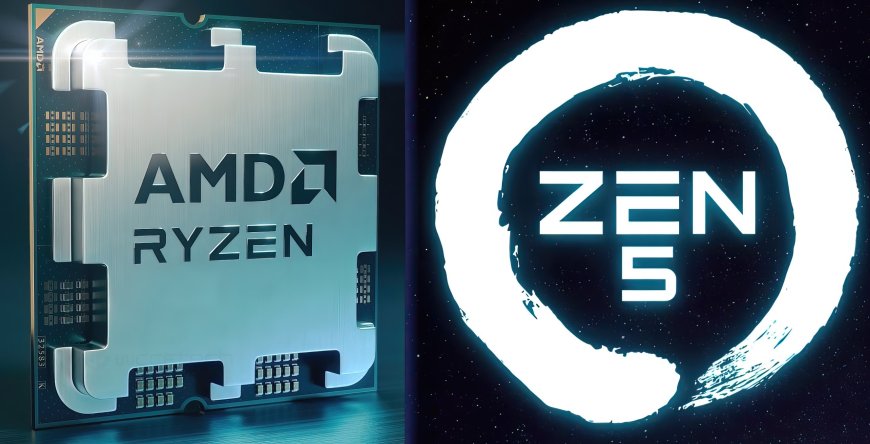Preparing for the Arrival of AMD Zen 5 CPUs: Linux Patches and Insights
AMD, a key player in the CPU market, is gearing up for its next big release with the Zen 5 CPUs. Recent developments on the Linux platform have caught the attention of tech enthusiasts, hinting at the imminent arrival of Zen 5 processors. In this comprehensive article, we explore the significance of the Linux patches, their implications for AMD's Zen 5 CPUs, and what to expect from this highly anticipated release.

Unveiling the Linux Patches
Over the course of the last two days, the Linux community has witnessed the release of six patches for AMD's Power Management Controller (PMC) driver. While these patches may appear unassuming, they carry significant implications. The PMC driver is a vital component responsible for managing power-related functions, including system sleep states such as "s2idle," a software-only sleep state.
Although the changes introduced by these six patches may seem minimal, with only a few dozen lines of code modified, their timing and context suggest a larger narrative. These patches are most likely related to the upcoming Family 1Ah CPUs, which are believed to be the foundation of AMD's Zen 5 processor lineup. As we delve deeper into these developments, it becomes apparent that AMD is diligently laying the groundwork for Zen 5's compatibility with Linux operating systems.
Also check WARHAMMER 40,000: ROGUE TRADER - A Detailed Review
Timing Is Key
The timing of these driver patches is particularly intriguing. As we approach the year 2024, these patches indicate that AMD is committed to ensuring the swift integration of Zen 5 CPUs into Linux-based systems. This strategic approach aligns with AMD's goal of providing users with a seamless experience upon the release of their new processors.
Notably, the steady stream of AMD Family 1Ah Linux patches has been flowing since July of the current year. This consistent effort reinforces the notion that AMD is actively preparing for the Zen 5 launch, prioritizing Linux compatibility and support. Such dedication to Linux-based platforms suggests a concerted effort to cater to a diverse user base and expand their reach in the CPU market.
A Departure from Tradition
One compelling aspect of these developments is the potential shift in AMD's release schedule. Historically, AMD has unveiled its Zen series processors in the fourth quarter (Q4) of each respective year. However, the pattern emerging from these Linux patches hints at the possibility of an earlier Zen 5 launch in 2024. While Zen 4 and Zen 3 adhered to the Q4 release timeline, this deviation suggests that AMD is eager to bring Zen 5 to market ahead of schedule.
It's worth noting that a leak from the previous week unveiled a next-generation Zen 5c EPYC CPU. While this leak generated excitement, it's essential to clarify that the CPU in question is an engineering sample, not the final product. Nevertheless, the leak reinforces the notion that AMD is making significant strides towards introducing Zen 5 to the world.
The Zen 5 iGPU: A Game-Changer
One of the highly anticipated features of Zen 5 CPUs is the integration of the Navi/RDNA 3.5 iGPU architecture. Leaks and rumors surrounding Zen 5 iGPUs suggest a remarkable performance boost. These leaks hint at iGPU designs boasting up to 40 RDNA 3.5 Compute Units, a substantial upgrade compared to previous iterations.
To put this into perspective, the RDNA 3.5 iGPU's performance is expected to rival that of the RDNA 3-powered Radeon RX 6750 XT, a graphics card that competes with the likes of the RTX 3070 and RTX 3060 Ti. With such power under the hood, AMD is poised to regain its lead in iGPU performance, especially in the Linux environment.
Implications for Gaming and Competing Platforms
The potential of AMD's RDNA 3.5 iGPUs in Linux has broader implications for the gaming landscape. It brings us closer to the possibility of a "Steam Deck 2" or increased competition for existing gaming platforms. Currently, devices like the Steam Deck OLED and ROG Ally offer limited GPU capabilities, with up to 8 RDNA 2 Compute Units and 4 RDNA 3 Compute Units, respectively.
In contrast, the upcoming Zen 5 CPUs with RDNA 3.5 iGPUs offer a substantial performance advantage. This advancement in iGPU technology may reshape the gaming experience on Linux-based systems, providing gamers with enhanced graphics capabilities and pushing the boundaries of what is possible in portable gaming.
Conclusion: Anticipating Zen 5's Arrival
In conclusion, the Linux patches for AMD's Power Management Controller driver have provided valuable insights into the imminent arrival of Zen 5 CPUs. While these patches may appear modest in scope, their timing and context indicate AMD's commitment to preparing for Zen 5's integration into Linux-based systems.
The potential deviation from the traditional release schedule suggests that AMD is eager to bring Zen 5 to market sooner than expected, setting the stage for an exciting year ahead in the CPU market. The inclusion of RDNA 3.5 iGPUs in Zen 5 CPUs promises a significant leap in graphics performance, with implications that extend beyond gaming and into the realm of portable computing.
As we eagerly await further developments and official announcements from AMD, the tech community remains poised for the arrival of Zen 5 and the transformative impact it may have on the world of computing.


































